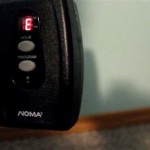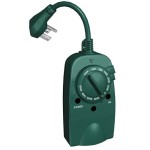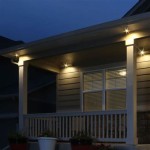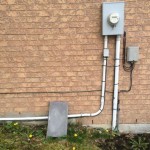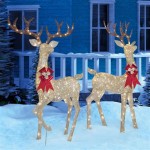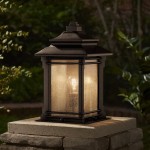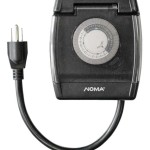Installing Outdoor Flood Lights Under Eaves
Outdoor flood lights installed under eaves provide enhanced security and illuminate outdoor spaces effectively. Proper installation ensures optimal performance and longevity of the lighting fixtures while maintaining safety. This article outlines the necessary steps and considerations for installing outdoor flood lights under eaves.
Planning and Preparation: Before beginning the installation, careful planning is crucial. This involves determining the optimal placement of the flood lights for desired coverage, selecting appropriate fixtures, and gathering the necessary tools and materials.
Placement Considerations: The location of the flood lights significantly influences their effectiveness. Consider the area requiring illumination, potential obstructions like trees or roof overhangs, and the desired beam angle. Higher placement generally provides broader coverage, while lower placement offers more focused lighting.
Fixture Selection: Choosing the right flood light fixture is essential. Options include LED, halogen, and incandescent bulbs, each with varying energy efficiency and lifespan. LED flood lights are generally preferred for their energy efficiency and long lifespan. Weatherproof and durable fixtures rated for outdoor use are essential.
Tools and Materials: Gather all necessary tools and materials before starting the installation. This typically includes a ladder, drill, screwdriver, wire strippers, electrical tape, wire connectors, mounting hardware (included with the fixture), and appropriate outdoor electrical wiring.
Safety Precautions: Working with electricity requires strict adherence to safety protocols. Always turn off the power to the circuit at the breaker box before commencing any electrical work. Using a voltage tester to confirm the power is off is highly recommended. Wearing appropriate safety gear, such as gloves and safety glasses, is essential.
Mounting the Fixture: The specific mounting process varies depending on the fixture and the eave construction. Generally, this involves using the included mounting hardware to securely attach the fixture to the eave. Ensure the fixture is mounted level and stable to prevent movement or damage.
Electrical Connections: Proper wiring is critical for safe and functional flood lights. Follow the manufacturer’s instructions for wiring the fixture. Typically, this involves connecting the fixture’s wires to the existing wiring using appropriate wire connectors and securing the connections with electrical tape.
Wiring Considerations: Use outdoor-rated wiring suitable for the fixture's voltage and amperage requirements. Ensure the wiring is protected from the elements and securely fastened to the eave. If running new wiring, consider using conduit to protect the wires and maintain a neat appearance.
Connecting to the Power Source: The flood light fixture may require a new dedicated circuit or can be connected to an existing outdoor lighting circuit. If a new circuit is needed, consult a qualified electrician. When connecting to an existing circuit, ensure the circuit can handle the additional load of the flood light.
Testing the Installation: After completing the wiring and mounting, turn the power back on at the breaker box. Test the flood light to ensure it functions correctly. Check for any loose connections or exposed wires. If any issues are detected, immediately turn the power off and address the problem.
Sealing and Weatherproofing: To prevent water damage and ensure the longevity of the fixture, properly seal any gaps or openings around the fixture with silicone caulk or weatherproof sealant. This helps prevent moisture from entering the fixture or electrical connections.
Adjusting the Flood Light: Many flood lights offer adjustable aiming to customize the light beam's direction. After installation, adjust the flood light to achieve the desired lighting coverage area.
Maintenance: Regular maintenance ensures the continued performance and safety of the flood lights. Periodically clean the fixture lens to remove dirt and debris that can obstruct light output. Inspect the wiring and connections for any damage or wear. Replace any damaged components promptly.
Professional Installation: While many homeowners can successfully install outdoor flood lights, complex installations or those involving new electrical circuits may require the expertise of a qualified electrician. Consulting a professional ensures the installation meets all safety codes and regulations.
Local Codes and Regulations: Before beginning any electrical work, familiarize yourself with local building codes and regulations regarding outdoor lighting. Obtain any necessary permits and ensure the installation complies with all applicable regulations.
Energy Efficiency Considerations: Choosing energy-efficient fixtures and utilizing features like motion sensors or timers can significantly reduce energy consumption and operating costs. Consider these options when planning the installation.
Dark Sky Compliance: In some areas, dark sky regulations may be in place to minimize light pollution. Choose fixtures that comply with these regulations, directing light downwards and minimizing upward light spill.

Ring Floodlight Cam Mounting Horizontal Under An Eave Or Overhang

How To Install A Motion Activated Security Light
Can I Install My Eufy Floodlight Under An Eave

Lighting Fixtures How To Install Exterior Security Lights

Lutec 2 Light White Outdoor Integrated Led Wall Or Eave Mount Flood P6221w The Home Depot

Ring Floodlight Eave Mount Install Kit Horizontal Soffit Flood Light Blk

Need Help With Mounting New Wyze Cam Floodlights Power Lighting Forum

Low Installing Outdoor Flood Lights Under Eaves Whole Free Sample Yuda

8 Soffit Lighting Ideas For Exterior Perfection Dekor

Lutec 2 Light White Outdoor Integrated Led Wall Or Eave Mount Flood P6221w The Home Depot
